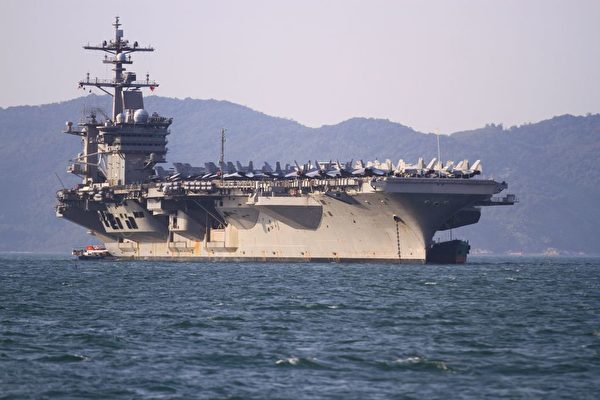From June 27 to August 1, the United States and 28 partner countries held the world’s largest naval exercise near Hawaii, known as the “Rim of the Pacific Exercise” (RIMPAC). Participants included countries like the UK, France, Israel, among others, not limited to Pacific nations, but notably excluding an invitation to China.
Experts believe that the United States led the allied forces to showcase their strong military power to deter any aggressive actions from China. They warn that if China were to act recklessly, it could face devastating consequences.
The 2024 RIMPAC exercise reached unprecedented scale with the participation of not only Pacific coastal countries but also non-Pacific nations like the UK, France, Brazil, and Israel. However, notably absent from the invite list was China, a coastal country in the Pacific.
Commander John Wade of the U.S. Third Fleet, leading the joint forces in the exercise, emphasized that the purpose of the exercise was not aimed at any specific country but rather meant to prevent aggression.
Regarding the exclusion of China from the exercise, Wade stated that it was due to China’s non-compliance with international norms.
RIMPAC is held every two years, and while China was invited in 2014 and 2016, they have not been invited since 2018.
Dr. Chung Chih-tung of Taiwan’s Institute for National Defense and Security Studies commented that by mentioning the exercise’s aim to prevent aggression, Wade was essentially criticizing China indirectly.
Dr. Yee Chung-ji, an adjunct assistant professor at National Taiwan University, stated that the main hypothetical enemy for the U.S. is China, and therefore, they did not invite China to participate in the military exercise specifically targeting actions taken by China.
The RIMPAC exercise in 2024 included various combat scenarios such as anti-submarine warfare, surface warfare, amphibious landings, carrier strike group defenses, and live-fire exercises, with a highlight being the Sink Exercise (SINKEX). Participating countries used the retired U.S. USS Tarawa amphibious assault ship as a target ship.
Historical examples have shown that securing absolute superiority at sea is crucial for successful amphibious landings. This exercise provides a rare opportunity to practice using their weapons to sink a protected enemy ship at sea.
Concerning the choice of the USS Tarawa as a target, Dr. Chung noted that it was likely a symbolic targeting of China’s Type 075 amphibious assault ship, given their similar tonnage levels.
Public data shows that China’s Eastern Theater Command Navy Fleet includes Type 075 amphibious assault ships, 8 Type 052D destroyers, 4 Type 052C trial destroyers, and 17 Type 054A frigates.
Military commentator Shen Zhou pointed out that the current Chinese destroyers are insufficient to protect an amphibious fleet or secure sea control. He cited historical examples, including World War II Pacific battles, emphasizing the importance of sea control.
Dr. Yee highlighted that the exercise showcased the U.S.’s ability to destroy China’s naval forces effectively.
The RIMPAC exercise was led by the U.S. aircraft carrier USS Carl Vinson, with participating countries sending 40 surface ships, 3 submarines, 14 ground units, and over 150 aircraft, including F-35 Lightning II stealth fighters, P-8A Poseidon maritime patrol aircraft, and V-22 Osprey transport aircraft. Japan sent its state-of-the-art destroyer JS Haguro and India deployed its indigenous stealth frigate INS Shivalik.
Dr. Yee believes that this exercise aims to demonstrate the collective power of U.S. and allied forces in countering China.
He explained that by showcasing a broad coalition involving countries like Germany, France, Denmark, Italy, and the Netherlands, the U.S. effectively signals to China that provoking military conflict would be futile.
Furthermore, the exercise serves as a clear statement of the U.S.’s readiness to intervene militarily in the Indo-Pacific region, should the need arise.
In conclusion, the RIMPAC exercise not only exhibits the combined strength of the U.S. and its allies but also serves as a strategic message to China about the consequences of aggressive actions in the region.

